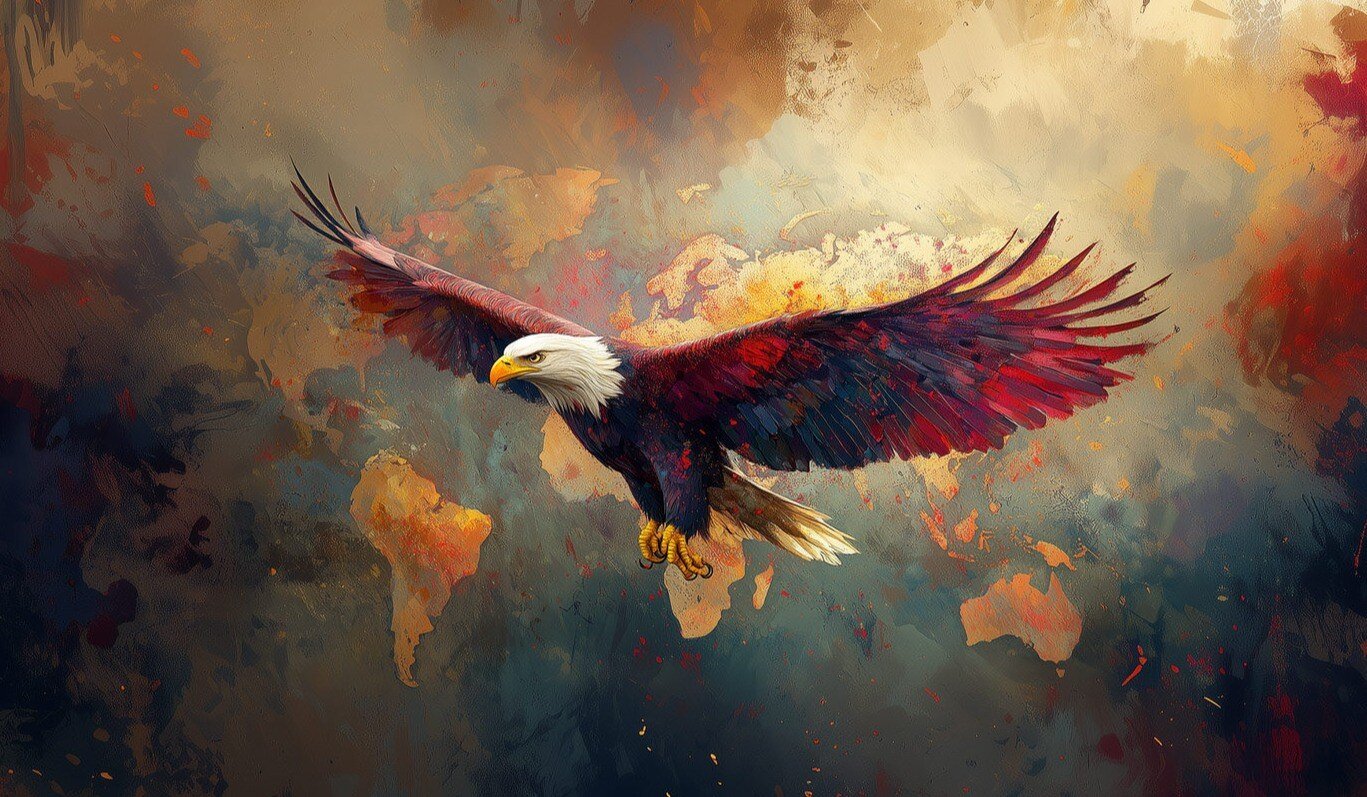
Tiger
Power, Courage and Intuition.

Discovering The Tiger Spirit
In the untamed jungles and vast landscapes, the majestic tiger prowls with an aura of raw power, embodying the essence of strength, courage, and intuition. The tiger's presence in the realm of spirit animals bestows upon us a potent dose of confidence, igniting the fire of courage within us, and urging us to tap into our inner reservoir of resilience when faced with adversity.
The tiger's medicine comes to us as a fierce reminder that we are not powerless in the face of challenges but possess an innate wellspring of strength waiting to be unleashed. Just as the tiger fearlessly confronts the unknown and overcomes obstacles, it beckons us to summon our own inner courage and face life's trials with determination and fortitude. In the tiger's presence, we find solace in the knowledge that even in the most daunting circumstances, we have the power to rise and prevail.
Beyond its physical prowess, the tiger is a master of intuition—an instinctual navigator of the wilderness. In this spiritual realm, the tiger imparts its gift of heightened intuition to us, encouraging us to trust the whisperings of our inner voice and listen to the wisdom of our hearts. By heeding the call of intuition, we can make choices that align with our highest purpose and lead us on a path of fulfilment and authenticity.
The tiger's vibrant stripes, like brushstrokes on a canvas, mirror the boundless creativity that resides within us. As we immerse ourselves in the tiger's energy, we are urged to unleash our creative spirit and fearlessly express our unique gifts to the world. Whether through art, music, writing, or any other form of self-expression, the tiger's medicine encourages us to embrace our creative essence and let it flow freely from our souls.
Moreover, the tiger is a symbol of bold action and decisive movement. When it comes to chasing its prey or defending its territory, the tiger does not hesitate—it springs into action with unyielding determination. In the same way, the tiger's energy inspires us to seize the moment and take bold strides toward our dreams and aspirations. With the tiger as our guide, we are empowered to step out of our comfort zones, embrace change, and embark on daring ventures, knowing that each step we take brings us closer to the fulfilment of our goals.
The tiger's spiritual energy is an invitation to step into our own power and reclaim our innate strength and courage. It calls us to listen to the profound wisdom of our intuition, trusting its guidance in the journey of life. As we embrace the tiger's medicine, we unleash our creative potential, infusing our existence with vibrant self-expression. And, with each bold action we take, we move closer to realizing our dreams and manifesting our true potential.
In the heart of the tiger's roar, we find the essence of our own roar—the resounding declaration of our strength, courage, and determination. Embracing the tiger's spiritual energy, we discover that within us lies an unwavering source of power, intuition, creativity, and fearlessness—a force that enables us to navigate the wild terrain of life and emerge triumphant in the pursuit of our deepest desires.
Prefer to listen to this article?
Check out our podcast!
Newsletter
Keep reading ↓
- Spirit Animals ↓
- See All
- Alligator
- Anaconda
- Ant
- Arabian Oryx
- Beaver
- Bee
- Beetle
- Black Bear
- Buffalo
- Butterfly
- Camel
- Cat
- Cheetah
- Chimpanzee
- Condor
- Coyote
- Crab
- Dog
- Dolphin
- Dove
- Dragonfly
- Elephant
- Elk
- Emu
- Falcon
- Flamingo
- Fox
- Frog
- Gazelle
- Giraffe
- Goose
- Gorilla
- Grasshopper
- Hawk
- Hedgehog
- Hippopotamus
- Horse
- Hummingbird
- Hyena
- Jaguar
- Kangaroo
- Kiwi
- Koala
- Koi Fish
- Komodo Dragon
- Kookaburra
- Ladybug
- Lamb
- Lemur
- Lion
- Lizard
- Llama
- Manatee
- Mandarin Duck
- Meerkat
- Monkey
- Moose
- Mountain Goat
- Mouse
- Nightingale
- Octopus
- Orca Whale
- Otter
- Owl
- Ox
- Panda
- Panther
- Parrot
- Peacock
- Polar Bear
- Quetzal
- Rabbit
- Raccoon
- Raven
- Rhinoceros
- Rooster
- Salmon
- Sea Turtle
- Seahorse
- Shark
- Sloth
- Snake
- Snow Leopard
- Spider
- Squirrel
- Starfish
- Swan
- Tiger
- Tortoise
- Whale
- Wolf
- Wombat
- Zebra
What Does The Tiger Represent?
The tiger, as an animal spirit, embodies a powerful and captivating presence. It symbolizes strength, courage, and fearlessness, commanding respect and admiration. With its keen instincts and sharp senses, the tiger represents heightened awareness and intuition, guiding individuals to trust their inner wisdom. The tiger's agile and stealthy nature imparts a sense of adaptability and resourcefulness, enabling us to navigate through life's challenges with grace and precision. As a symbol of protection and authority, the tiger serves as a guardian, offering support and guidance during times of vulnerability. Embracing the spirit of the tiger encourages individuals to stand up for their beliefs, assert their boundaries, and embrace their innate leadership qualities. The tiger's enigmatic allure also reminds us of the importance of embracing mystery and the hidden aspects of our psyche, encouraging self-discovery and personal transformation.
Keep reading ↓
Supporting content
Cultural and Mythological Significance Of The Tiger Spirit
Across the globe, the tiger resonates with cultural and mythological profundity in numerous societies and belief systems. Many cultures laud the tiger for symbolizing power, strength, and regality, viewing it as a representation of nature's awe-inspiring force. Within this context, it's often linked to royal and kingly qualities, while in some Asian cultures, the tiger is revered as a sacred emblem of courage, protection, and good fortune. Mythologically, tigers enjoy a prominent place in legends and folklore, with roles ranging from divine entities that repel evil spirits to symbols of prosperity. In Chinese mythology, for instance, the white tiger stands as one of the cardinal Four Symbols, signifying the west and epitomizing both autumn and metal.
Tigers also serve as spiritual sentinels or totem animals in various belief systems, thought to grant protection, guidance, and strength. They symbolize the intricate balance of nature, essential for sustaining ecological equilibrium through their role as apex predators. Traditional folktales across cultures often feature tigers as pivotal characters, imparting moral lessons and extolling virtues like bravery and wisdom. Astrologically, some systems correlate the tiger with specific zodiac signs, impacting personalities and traits.The artistic realm has celebrated the tiger's essence for centuries, with their depictions in paintings, carvings, and sculptures highlighting both their terrestrial prowess and spiritual depth. All in all, the tiger's multifaceted cultural and mythological influence weaves a combination of power, protection, and mystical fascination.
Supporting content
Keep reading ↓
A Tiger In My Dream
The tiger, with its majestic and powerful presence, often carries profound symbolic meanings when it appears in dreams. Depending on the dream's context and the individual's personal experiences, the spirit of a tiger can convey a myriad of messages and emotions. For many, a tiger embodies strength and might, signifying untapped inner abilities and resilience to overcome obstacles. Their fearless nature may represent a nudge to approach life situations with renewed courage and self-confidence, suggesting the dreamer's need to take bold actions and fully realize their potential.
On a deeper psychological level, the wild essence of a tiger can highlight the dreamer's suppressed or unexplored facets of their personality, urging them to confront and integrate these shadow aspects.
Yet, not all interpretations lean towards self-empowerment. Sometimes, a tiger's appearance serves as a warning, suggesting caution in certain waking life situations or relationships. This potent symbol might be prompting the dreamer to remain vigilant and wary. In spiritual contexts, a tiger in dreams can be perceived as a guiding spirit animal, offering protection or insights from the ethereal realm. Additionally, given the tiger's intrinsic bond with nature, such dreams might indicate a yearning for a deeper connection with the environment or a reminder to engage more with the natural world.
Ultimately, dream interpretations remain a deeply personal experience. Reflecting on the emotions and specifics of the dream, perhaps through maintaining a dream journal or consulting a professional, can offer more tailored insights into its relevance and implications.
Keep reading ↓
Habitat, Behaviours and Ecological Importance Of The Tiger
Habitat:
The tiger is a magnificent big cat species native to various parts of Asia. Historically, tigers once roamed across a vast range, from the forests of Eastern Turkey to the tropical jungles of Indonesia. However, due to habitat loss and poaching, their range has significantly reduced over time. Presently, tigers are found in a few isolated pockets across Asia. India, Nepal, Bhutan, and Bangladesh are home to the Bengal tiger, the most numerous and well-known tiger subspecies. The Russian Far East, particularly the Primorsky and Khabarovsk regions, is inhabited by the Amur tiger, also known as the Siberian tiger. Southeast Asia is home to the Sumatran tiger, Malayan tiger, and Indo-Chinese tiger, residing in Indonesia, Thailand, and Malaysia, respectively. Tigers are highly adaptable and can thrive in various habitats, including tropical rainforests, grasslands, mangrove swamps, and dense forests. However, protecting their habitat and establishing conservation measures are vital to ensure the survival of this endangered species and their invaluable place in the natural world.
Behaviours:
- Hunting and Preying: Tigers are apex predators, and one of their primary behaviors in their natural habitat is hunting and preying on various ungulates, such as deer, wild boar, and antelope. They are stealthy hunters, relying on their keen senses, agility, and strength to ambush and capture their prey.
- Solitary Lifestyle: Tigers are mostly solitary animals, and their natural behavior involves living and hunting alone. They establish and fiercely defend their territories, which can range from a few square kilometers to hundreds of square kilometers, depending on the availability of prey and resources.
- Territorial Marking: Tigers use scent marking and vocalizations to establish and communicate their territories. They may scratch trees, spray urine, and leave scat in strategic locations to mark their boundaries and communicate with other tigers in the area.
- Resting and Camouflage: Tigers are crepuscular and nocturnal animals, meaning they are most active during dawn and dusk and throughout the night. During the day, they often rest and seek shelter in dense vegetation or secluded areas, using their well-camouflaged fur to remain inconspicuous.
- Swimming and Water Activities: Tigers are strong swimmers and are known to be comfortable in the water. They use water bodies for various activities, including cooling off in hot weather, traveling between territories, and hunting. Some tiger populations, such as the Bengal tiger, are known for their affinity for swimming and are even found in coastal mangrove forests.
Ecological Importance:
The tiger holds significant ecological importance in its natural habitat. As an apex predator, the tiger plays a crucial role in maintaining the balance of the ecosystem. By regulating prey populations, tigers help prevent overgrazing and maintain the health of plant communities. This, in turn, has a cascading effect on other species within the food web. The presence of tigers also contributes to the overall biodiversity of their habitat. They act as umbrella species, meaning their conservation indirectly benefits numerous other species sharing the same ecosystem. Moreover, the tiger's territorial behavior helps prevent the encroachment of other large carnivores, leading to a reduction in direct competition for resources. Furthermore, the economic significance of tigers through ecotourism and conservation efforts supports the protection of vast tracts of natural habitats and contributes to local communities' livelihoods.
Keep reading ↓
How the Tiger Contributes To Scientific Research
Research on tigers has deepened our understanding of conservation strategies, given their endangered status and the threats from habitat loss and poaching. Furthermore, their genetic diversity, behavior, and physiology are subjects of ongoing research, offering knowledge on big cat evolution, territoriality, and predator-prey interactions. As emblematic creatures, tigers highlight the pressing need for biodiversity conservation and the complex interplay of ecological factors that shape our natural world. By preserving tiger populations and their habitats, we ensure the survival of a diverse array of plant and animal species, promoting ecological stability and the overall health of the ecosystems they inhabit.
Keep reading ↓
Guided Visualization To Connect With The Tiger Spirit
Complement your ritual with...
Binaural beats!
To connect with the spirit of a tiger through guided visualization, find a quiet and comfortable space where you can relax without any distractions. Take a few deep breaths to center yourself, and when you feel ready, close your eyes and begin the visualization:
- Imagine yourself standing in a peaceful and lush forest, surrounded by tall trees and the sounds of nature. Feel the soft ground beneath your feet and the gentle breeze on your skin.
- As you take a few more deep breaths, set an intention to connect with the spirit of the tiger, seeking its wisdom, strength, and guidance.
- Now, envision a clearing ahead of you, where a magnificent tiger emerges from the shadows. Observe its powerful presence, its beautiful striped coat, and the intensity in its eyes.
- Approach the tiger with a sense of respect and humility, knowing that you are entering its territory as a seeker of wisdom.
- As you stand before the tiger, feel a sense of calm and trust. The tiger's energy is strong yet gentle, and you know that it has come to share its teachings with you.
- In your mind, ask the tiger for guidance or any messages it may have for you. Be open to receiving its wisdom in any form – a feeling, a word, an image, or a thought.
- Take a moment to listen and be receptive to what the tiger communicates to you. Trust your intuition and inner knowing as you receive insights from this powerful spirit.
- If you feel comfortable, you can ask the tiger to accompany you on your journey, guiding and protecting you as you move forward in life.
- Spend as much time as you need in the presence of the tiger, absorbing its energy and wisdom.
- When you are ready, express your gratitude to the tiger for its guidance and the connection you've made.
- Slowly bring your awareness back to the present moment, feeling grounded and refreshed by the experience.
- Take a few more deep breaths, wiggling your fingers and toes, and when you feel fully present, open your eyes.
Shop
Connect with the essence of our Spirit Animals!

Beach Towel
Buy Now

Sherpa Blanket
Buy Now

Flag Wall Art
Buy Now

Oracle Decks
Buy Now
From Our Blog
Stay up to date with our latest articles!

What Leadership Really Means (And What We’re Forgetting)

Brains, Hearts & Bold Moves with Lara Stalquist

What’s Really Worth Stressing About? Reclaiming Your Peace In A World That’s Always “On”
Please note:
It is crucial to acknowledge that the symbology and interpretations can differ greatly among various cultures, religious ideologies, and individual viewpoints. The significance and comprehension of these spirit animals may vary depending on the particular mythological backdrop or the spiritual and philosophical framework through which they are approached. The descriptions of these Oracle Cards are based on information gathered from various sources. Our aim is to provide an overview and a fictional interpretation and we cannot guarantee the accuracy or completeness of this information. The artwork featured on these Oracle Cards have been crafted by digital artists and designers, Relmi Damiano and Sacha Damiano, in conjunction with Artificial Intelligence that has been enhanced by human intervention. The visual imagery serves as a fictional representation of some of the symbols associated with these goddesses throughout history.

